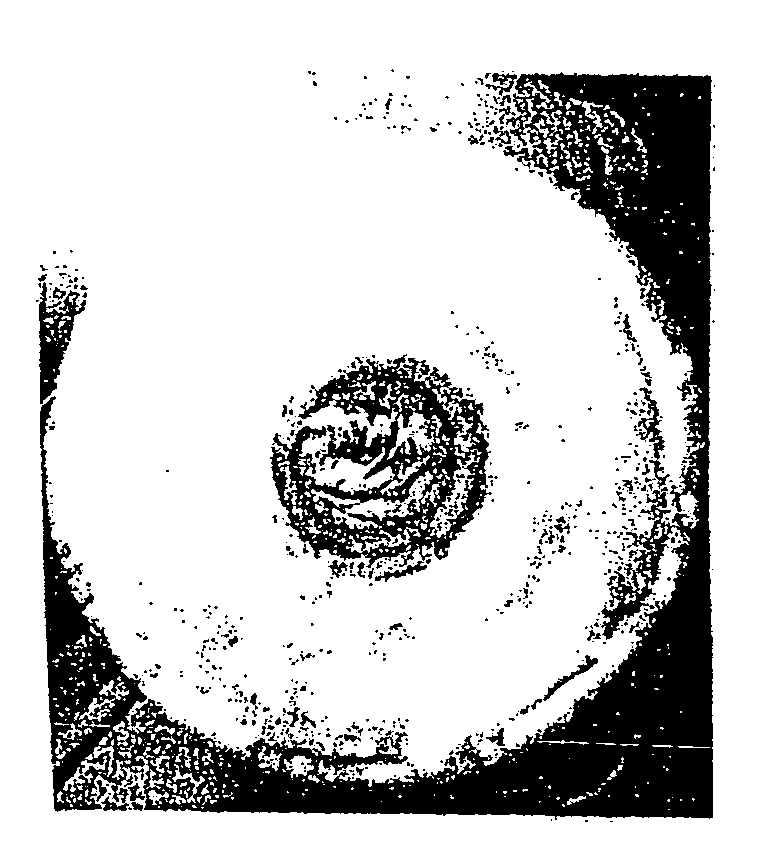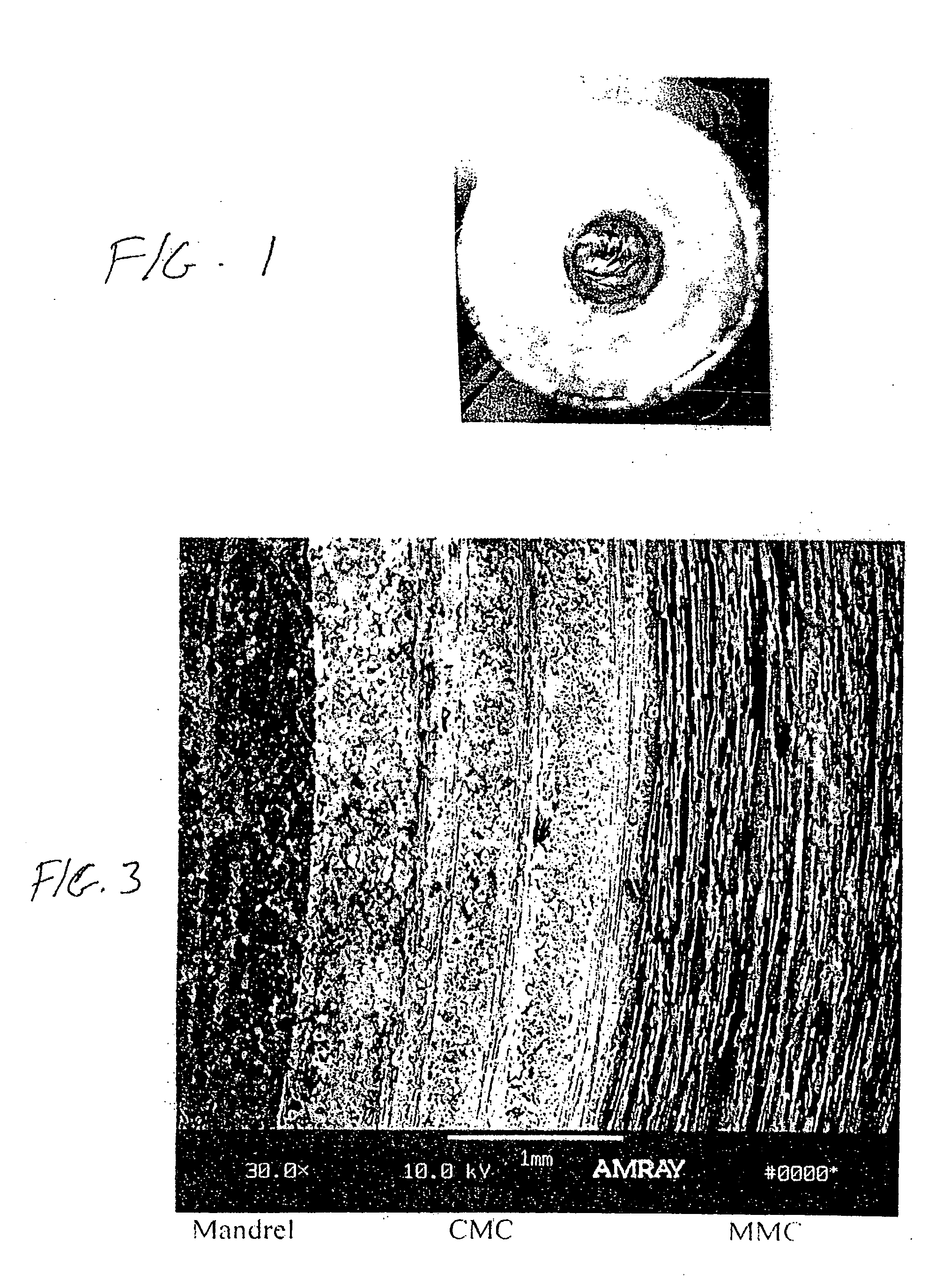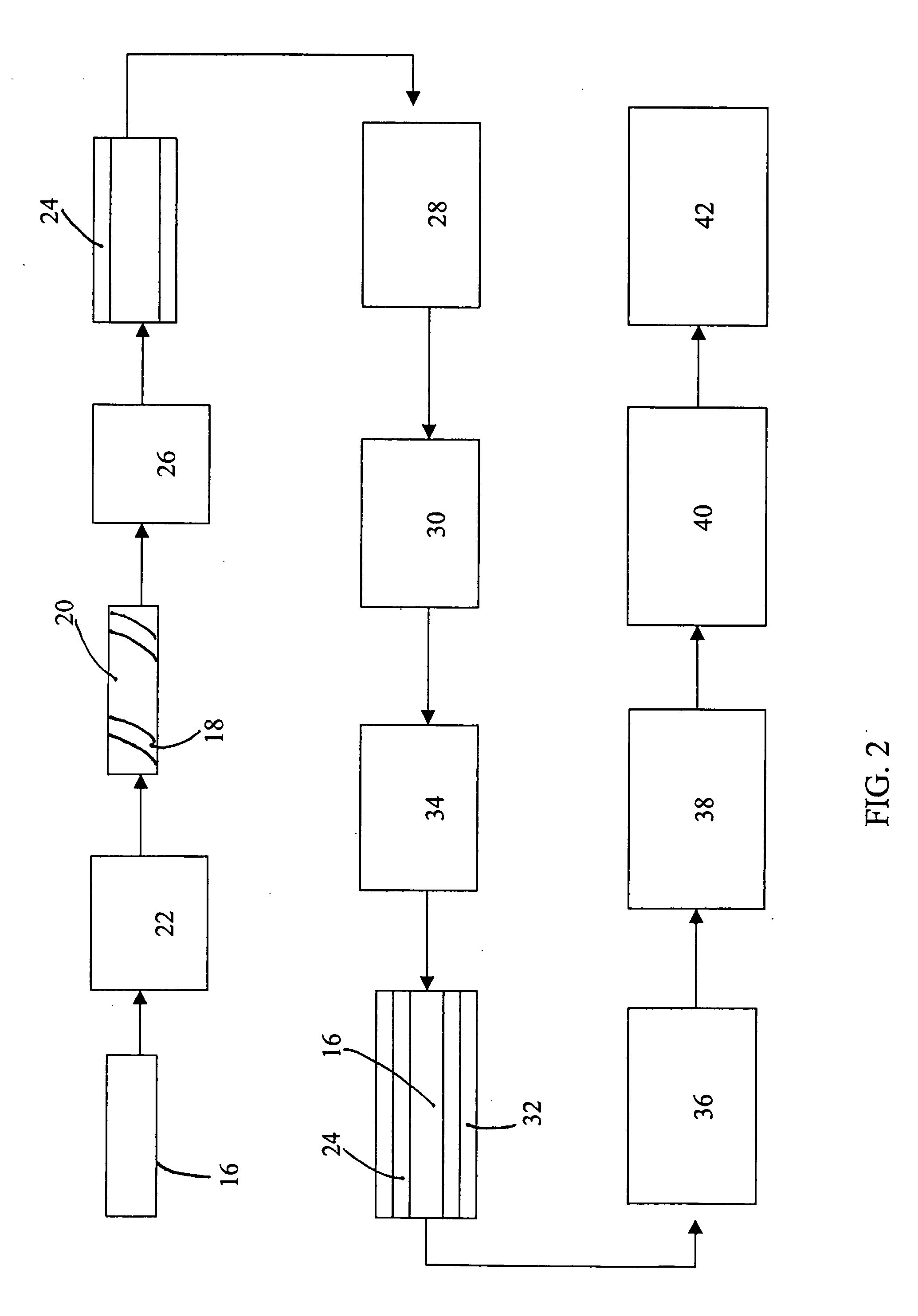Gun barrel and method of forming
a technology of gun barrels and tubes, applied in the direction of barrels, weapon components, weapons, etc., can solve the problems of limited the lifetime of conventional steel gun barrels to unacceptably short times, increased wear of the inner surface of the gun barrel, and barrel failure, etc., to achieve high strength, high strength overwrap, and high strength. the effect of high strength
- Summary
- Abstract
- Description
- Claims
- Application Information
AI Technical Summary
Benefits of technology
Problems solved by technology
Method used
Image
Examples
example 1
[0030] A graphite mandrel was machined with lands and grooves which replicate the rifling in a barrel. A silicon carbide (SiC) fiber (HI-NICALON available from COI Ceramics, Inc, San Diego, Calif.) was wound into the grooves of the graphite mandrel which was then overwrapped with a hoop layer of the SiC fiber. A SiC preceramic polymer (VL20 available from Kion Corporation, Huntington Valley, Pa.) was infiltrated into the SiC fiber wrappings and pyrolyzed to produce a SiC matrix. The preceramic polymer was reinfiltrated and pyrolyzed in five additional cycles to build up a dense SiC matrix.
[0031] Longitudinal SiC fibers (HI-NICALON available from CIO Ceramics, Inc.) were then wrapped around the SiC / SiC composite layer which was then followed by a hoop wrap and then ±22° wraps. A SiC preceramic polymer (VL20 available from Kion Corporation) was then reinfiltrated and pyrolyzed in five more cycles. Any number of fiber wrap layers in different architectures can be applied, and the SiC ...
example 2
[0034] The graphite mandrel is prepared as in Example 1, and after the initial SiC fiber winding, instead of using a preceramic polymer to form the SiC matrix, the SiC matrix is produced by chemical vapor infiltration (CVI) processing, by subjecting the graphite mandrel to CVI using methyltrichlorosilane and hydrogen in a CVI chamber heated to 1000° C. which produces a SiC matrix in the SiC fiber array. Additional layers of SiC fibers are then wound, and the SiC matrix produced either by CVI or the preceramic polymer. The MMC and final barrel preparation are performed by overwrapping with alumina, and squeeze casting as described in Example 1.
example 3
[0035] A steel tube mandrel was rotated with water flowing in its center, and a plasma transferred arc (PTA) system was used to deposit Ta-50Cr (% by weight) in a molten state on the outer surface of steel tube mandrel and built up layer by layer until the deposited thickness was 0.08″. The Ta-50Cr was produced by feeding equal amounts of Ta and Cr powder to the arc pool. Following deposit of the Ta—Cr layer on the mandrel, a layer of about 0.040″ thickness of pure tantalum was applied with a PTA system which was graded into pure titanium using a programmed computer controlled powder feed system to the PTA arc pool. This operation was carried out in an inert gas chamber with a continuous flow of Ar gas so as to maintain the oxygen content in the chamber at <100 ppm. In this manner a titanium structure was built up for the barrel. The pure Ta layer was produced to avoid any brittle intermetallic formation with the titanium.
[0036] After building the titanium layer, the steel mandrel ...
PUM
| Property | Measurement | Unit |
|---|---|---|
| pressures | aaaaa | aaaaa |
| strength heat | aaaaa | aaaaa |
| strength | aaaaa | aaaaa |
Abstract
Description
Claims
Application Information
 Login to View More
Login to View More - R&D
- Intellectual Property
- Life Sciences
- Materials
- Tech Scout
- Unparalleled Data Quality
- Higher Quality Content
- 60% Fewer Hallucinations
Browse by: Latest US Patents, China's latest patents, Technical Efficacy Thesaurus, Application Domain, Technology Topic, Popular Technical Reports.
© 2025 PatSnap. All rights reserved.Legal|Privacy policy|Modern Slavery Act Transparency Statement|Sitemap|About US| Contact US: help@patsnap.com



